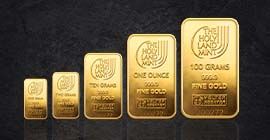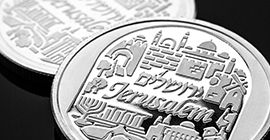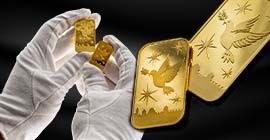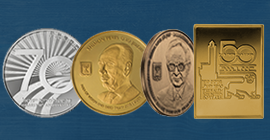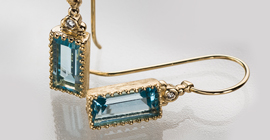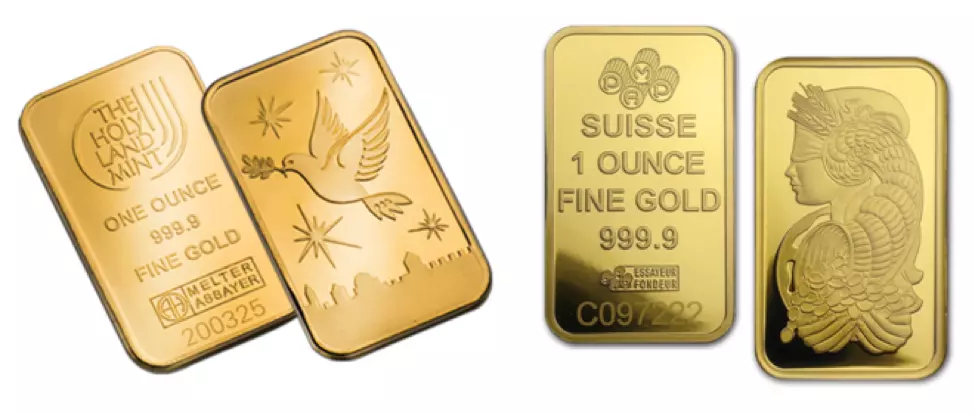Gold As A Safe Haven - An Investment In The Days Of Corona-virus
Throughout human history, and in the modern trading era in particular, gold has proven itself as a safe haven. The price of gold remains relatively stable even when demand for it falls, and tends to rise sharply when the prices of other assets collapse. In this article, we will describe the uniqueness of investing in gold during the severe corona-virus crisis we are facing today, and we will understand why the demand for the yellowish metal is expected to skyrocket in the near future.
The world is facing these days one of the most difficult and complex economic crises we have ever known. In contrast to the 2008 financial crisis or the bursting of the dot.com bubble in the early 2000s, this time the economic blow stems from the spread of a deadly plague. This is a scenario that few have been prepared for and that we have not experienced in the last century.
To protect against the corona virus, the Earth raises a "closed" sign, as shown very creatively in the cover illustration of The Economist magazine. Around the world, citizens are locked up in homes, shops and factories, cease operations, and workers are laid off for an unknown period. Health concerns are causing a general decline in activity and turmoil in the capital markets. According to experts, the economic aspects of the corona crisis may be reminiscent of the Great Depression of the 1930s, with a sharp slowdown in production and consumption, rising unemployment and a prolonged recession.
In the midst of the crisis, it is difficult to assess how it will develop and how long it will last. However, there are financial anchors that have already proven to be relatively stable in moments of uncertainty - the most prominent of which is gold. The yellow metal has over the years gained the status of Safe Haven - a shelter property, whose value remains stable and even rises sharply when the prices of other properties collapse. Gold has proven its unique status already in the great crisis of the 1930s, and has done so again in crises that have occurred in recent decades.
Gold has reached its prestigious status due to exceptional features: it is very rare, its quantity is limited and so it will remain; and it is also extremely durable, a feature that characterizes only a few materials in the world. Another characteristic of gold bars and bullion is mobility, so it is convenient to store and trade them. The charm of gold stems from the fact that these miraculous qualities originate in nature, and are not dependent on human actions. Therefore, unlike most financial assets, gold is relatively free from manipulations by governments or markets.
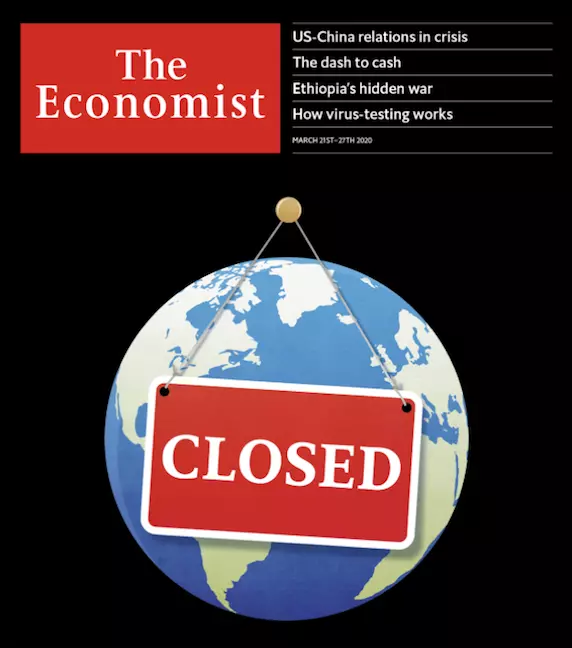
Cover of Economist magazine, March 2020.
Lessons from the 2008 crisis
Traders, investors and those who want to protect their assets, turn to gold as an emergency shelter. They do so against the backdrop of its performance over the past 150 years, and more importantly - due to the reputation it has accumulated in human society over thousands of years. This is what happened in the 2008 financial crisis, which cut more than half of the value of stock markets in the United States and around the world, and led to a rise in demand for gold metal, which doubled in price.
Although at the beginning of the crisis in 2008 the price of gold fell, in parallel with the fall in the prices of stocks and other assets, a deep understanding of the reasons for this strengthens the status of gold as a safe haven for investment. In the beginning of a major economic crisis, investors are forced to sell assets quickly. The market shock creates an urgent need for cash, to meet debt repayments and payments or to close investment positions. The panic that arises during a crisis also has a significant part to play in the cash flow that characterizes the first moments of a crisis.
In such moments of uncertainty, businessmen and traders rush to buy dollars and other major currencies. They do this to meet their financial obligations, and also as a temporary protection against the collapse in asset prices, such as stocks for example. Because the price of gold is usually denominated in dollars, the strengthening of the US currency due to the reasons we detailed above - causes a decrease, sometimes temporarily, in the price of gold.
However, the special nature of gold is also evident in these emergencies: its price falls less than other assets, and its price skyrockets long before the economic crisis ends. This was the case in 2008, when after a 25% drop in price in the first months of the crisis, gold returned to its pre-crisis price within a few months - and then continued to climb to a record price.
We will summarize the behavior of gold in the 2008 crisis:
1. In the first phase of the crisis, investors preferred to sell less stable assets, such as stocks, and strove to retain their gold holdings. Despite this, they were forced to get rid of some of the gold holdings.
Bottom line: The price of gold decreased, in relation to the strengthening of the dollar, among others, but at a lower rate compared to other assets.
2. In the second phase of the crisis, investors were in a hurry to return to gold investments. At the same time, the economy was still struggling to return to growth, there was uncertainty about when business and equities would return to full activity - and many were keen to give their investment portfolio a golden anchor.
Bottom line: The price of gold skyrocketed.
Potential rise of gold
The behavior of gold in the corona crisis is similar to the moves it recorded in the 2008 crisis. At the start of the current crisis, the gold price began to fall, but significantly less forcefully compared with the collapsing prices of other stocks and assets. Apparently, investors and traders had to sell gold to stock up on cash, but chose to keep as much of their gold inventory as possible as an insurance policy for the continuation of the crisis.
These days, it's hard to know what a day will bring. It is to be hoped that the gloomy forecasts will come true and life will return to routine relatively quickly, but there is a growing concern about the realization of serious scenarios and about a crisis and recession that will continue over a long period of time.
Meanwhile, we see that similarly to the 2008 crisis, demand for gold is rising and its price as well, after a decline in the first moments of the outbreak. While there may be more temporary downward turning points, it can be estimated that at some point, probably even before the crisis subsides, investors will return to buying gold as a stable anchor and its price will skyrocket.
From left to right: Dove of Peace and Lady Fortuna Gold Bars.
Another possible reason for the rise in the price of gold is the policy of the United States government. To deal with the crisis, the US administration is purchasing debt assets on the stock exchanges and plans to distribute grants and guarantees to the business and private sectors. These plans amount to a print of trillions of dollars, as was the case in the 2008 crisis and as are the practice of other governments around the world, including Europe and Israel.
The expected result of the massive dollar printing will be a decline in the value of the US currency. As a result, we see in the mirror image of the process that takes place at the beginning of the crisis, then gold weakened relative to the dollar. Now, following the vigorous dollar printing, the value of the dollar will fall - and so the price of gold denominated in dollars will rise.
Gold vs. stocks
The question of whether gold is expensive or cheap is of course relative, in relation to the past and in relation to other assets. We described in the previous section of the article how gold is conducted against the dollar. However, there are other ratios that can be used to estimate the price of gold.
One of the significant indicators of the price of gold, which has proven itself over decades, is the ratio between it and the Dow Jones index, known as the Dow for short. The Dow was founded in the late 19th century and includes the 30 most powerful and influential companies in the United States. The index is calculated based on the stock values of those companies, and is considered a leading measure of the resilience of the American economy.
The ratio of gold to Dow is calculated by the number of ounces of gold needed to purchase a single Dow unit. In periods when the Dow leaps, the ratio increases accordingly, and then one can say that gold is relatively cheap; whereas in periods when the Dow is weakening, the ratio is small - then it can be said that gold is relatively expensive.

The ratio of the Dow Jones to the gold index, in dollars, between 1990-2020.
Due to the cyclicality of the tide and crisis in the stock markets, it can be estimated that when the ratio of Dow to gold is high and it takes an investment of many gold ounces to purchase the Dow - the price of gold is expected to rise. Indeed, that was the case before the dot.com bubble burst. The ratio of Dow to gold reached a peak of many years, then began to decline sharply with the collapse in stock prices and the rise in gold prices that occurred in response. The ratio of gold to Dow continued to decline both during and after the 2008 financial crisis (as can be seen in the graph).
Over the past decade, the Dow has strengthened at a greater intensity than gold. Accordingly, the ratio of Dow to Gold has climbed, signaling that at some point the trend will reverse again, and so it was. With the rise in demand for gold in the last two years - amid fears of an impending economic crisis and rising geopolitical tensions between the United States, China and Russia - the ratio of gold to the Dow began to decline again: that is to say, the price of gold rose again.
Even now, in the midst of the corona crisis, the ratio of gold to Dow is still relatively high in comparison to the past. This fact is further evidence that the price of gold is not relatively expensive - and is expected to continue to rise.
Shop gold for investment now >>
Contact one of our representatives >>
The information contained in this website should not be construed as investment advice or as a substitute for investment advice suited to your own individual financial needs for purchase or investment, investment activities or transactions, or as recommendations or opinions as to the benefits of investing in gold or in any other specific products. The information contained in this website does not constitute an alternative for investment advice and you should not act upon it, before seeking advice adapted to your own personal situation and needs.

